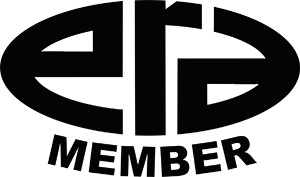When it comes to manufacturing metal parts, two popular methods stand out: die casting and metal stamping. Both processes are used in various industries, yet they differ significantly in their techniques, applications, and outcomes.
Understanding Die Casting
Die casting is a process where molten metal is forced into a mold cavity under high pressure. The mold, known as a die, is typically made from hardened steel and can produce complex shapes with high precision and repeatability. There are two main types of die casting:
- Hot Chamber Die Casting: This method is ideal for metals with low melting points, like zinc and magnesium, and allows for fast cycle times.
- Cold Chamber Die Casting: Used for metals with higher melting points like aluminum, this method requires a separate furnace to melt the metal before it is injected into the die.
Die casting is known for its ability to produce parts with excellent dimensional accuracy, smooth surfaces, and fine details. It’s widely used in the automotive, aerospace, and electronics industries, where strength, durability, and precision are needed.
Exploring Metal Stamping
On the other hand, metal stamping involves shaping metal sheets into desired forms using a series of dies and punches. This process can include a variety of techniques, such as blanking (cutting the metal sheet into desired shapes or blanks), punching (creating holes or cutouts in the metal sheet), bending (forming the metal into specific angles or shapes), and embossing (creating raised or recessed designs on the metal surface). Metal stamping is highly efficient for producing large parts at a relatively low cost.
Metal stamping is versatile and can handle various materials, including steel, aluminum, brass, and copper. It’s commonly used in automotive, appliances, and electronics industries, where high-volume production and cost-effectiveness are important.
Comparing Precision and Tolerance
Precision and tolerances are key factors in deciding between die casting and metal stamping. Die casting offers superior precision and can achieve tight tolerances and intricate details. This makes it ideal for parts that require high accuracy and complex geometries, such as engine components and electronic housings.
Metal stamping, while capable of high precision, generally offers slightly less tolerance than die casting. However, advancements in stamping technology have significantly improved its accuracy, making it suitable for producing detailed parts like connectors and brackets.
Considering Production Volume and Cost
Due to the complexity and durability of the molds, die casting involves higher initial tooling costs. However, once the molds are made, die casting is highly efficient for mass production, reducing the cost per part.
Metal stampingtypically has lower tooling costs and is more cost-effective for high-volume production runs. The ability to quickly change dies also allows for greater flexibility in production, accommodating different designs and product variations without significant downtime or expense.
Material Compatibility and Applications
Die casting is well-suited for non-ferrous metals like aluminum, magnesium, and zinc. These materials offer excellent strength-to-weight ratios, corrosion resistance, and good thermal and electrical conductivity, making them ideal for automotive and electronics applications.
Metal stamping, however, is more versatile in terms of material compatibility. It can handle a wide variety of metals, including both ferrous and non-ferrous options. This flexibility makes metal stamping suitable for various applications, from automotive body panels to intricate electronic components.
Both die casting and metal stamping offer unique advantages and are suited to different manufacturing needs. Improve your manufacturing process with King Epoxy Emblem Co., Ltd, where we have expertise in metal stamping. Contact us today to learn more about our customized solutions.


